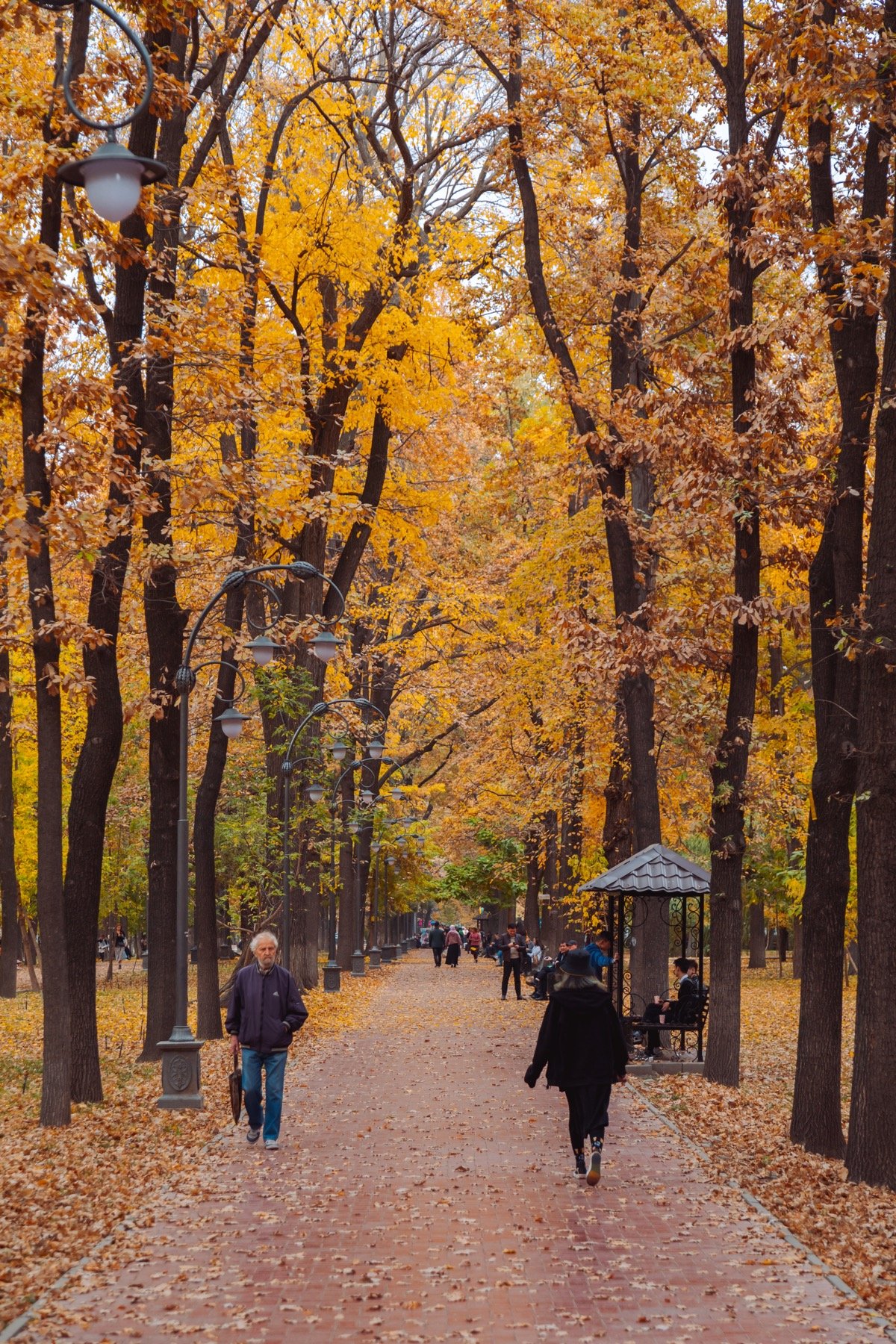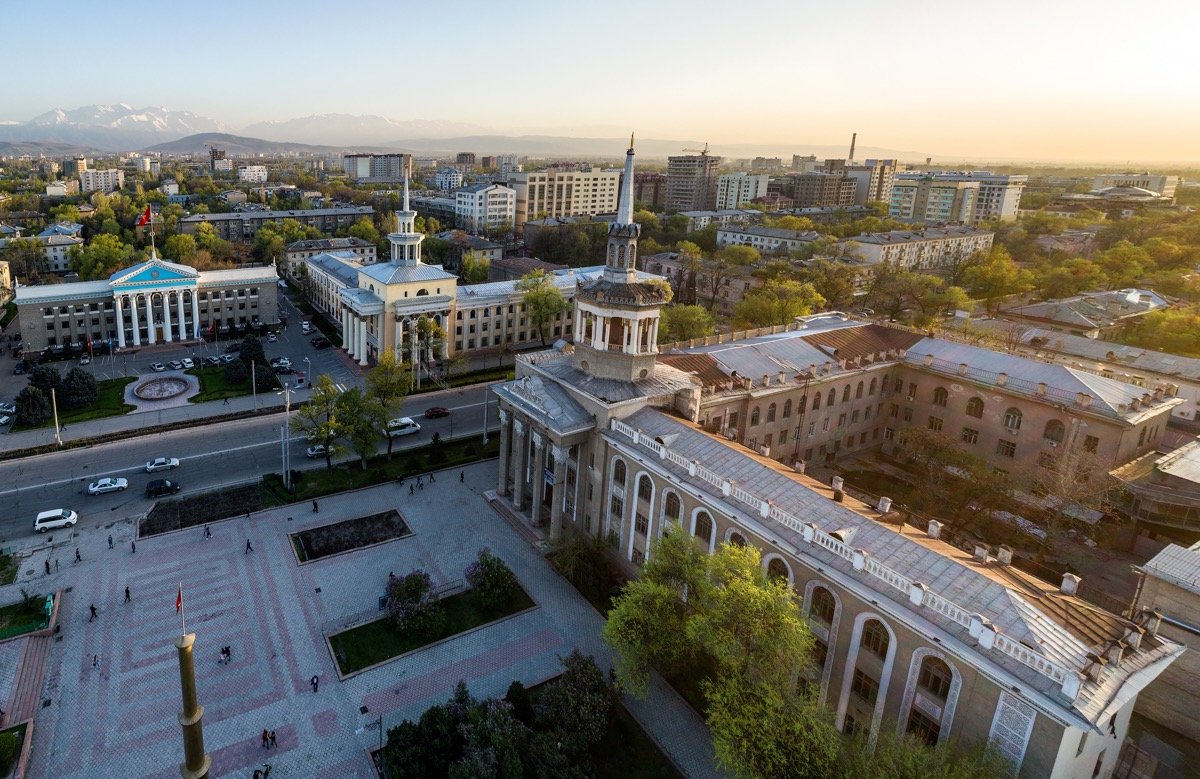Introduction
Welcome to a captivating journey through the remnants of the Soviet era in the capital of Kyrgyzstan! In this article, we will delve into the intriguing Soviet legacy that still permeates the streets and structures of this hidden gem in Central Asia. From grandiose architectural marvels to the echoes of a bygone era, the capital of Kyrgyzstan offers a unique window into the Soviet influence of yesteryears. Join us as we unravel the fascinating story of this city’s Soviet past.

Bishkek: Tracing the Soviet Footprints
A Historical Overview
Bishkek, formerly known as Frunze, has a rich history that intertwines with the Soviet Union. Named after the prominent Soviet military commander Mikhail Frunze, the city became a significant hub of industrial and administrative activities during the Soviet era. Today, Bishkek stands as a living testament to that era, preserving its architectural heritage and cultural nuances.
Soviet-Inspired Architecture
The cityscape of Bishkek bears the unmistakable imprint of Soviet urban planning and architecture. Wide boulevards, monumental buildings, and vast green spaces are characteristic features that showcase the grandeur of Soviet influence. Take a stroll along Chuy Avenue, the city’s main thoroughfare, and marvel at the imposing structures that line the street, each with its own story to tell.
Ala-Too Square: The Heart of Soviet Bishkek
At the heart of Bishkek lies Ala-Too Square, a symbolic space that encapsulates the spirit of the Soviet era. Previously known as Lenin Square, it served as a central gathering point for political rallies and celebrations during that time. Today, the square continues to be a focal point for public events, with its grand monuments and cascading fountains creating a captivating ambiance.
Exploring Bishkek’s Soviet Heritage
State Historical Museum: A Glimpse into the Past
For a comprehensive understanding of Bishkek’s Soviet history, a visit to the State Historical Museum is essential. Housed in a majestic building reminiscent of Soviet architectural style, the museum showcases a vast collection of artifacts and exhibits that chronicle the city’s past. From photographs and documents to personal belongings of prominent figures, this museum offers a captivating journey through time.
Soviet-Era Monuments: Icons of the Past
Bishkek is adorned with numerous monuments that pay homage to the Soviet era and its ideals. The Monument to the Fighters of the Revolution stands tall, commemorating the revolutionary fervor that shaped the country’s history. Another notable landmark is the Statue of Lenin, a bronze tribute to the influential Soviet leader. These monuments not only reflect the Soviet legacy but also serve as cultural touchstones within the city.
Osh Bazaar: A Soviet-Era Shopping Experience
Immerse yourself in the vibrant atmosphere of Osh Bazaar, a bustling marketplace that has thrived since the Soviet era. Here, you can witness the daily life and commercial spirit that has endured over the years. From fresh produce to clothing and souvenirs, this market offers a glimpse into the everyday reality of Bishkek’s residents during the Soviet times. Let the bustling energy of the bazaar transport you to a different era.
Preserving the Soviet Story: Museums and Memorials
The Museum of Fine Arts: Soviet-Inspired Creativity
The Museum of Fine Arts in Bishkek showcases a diverse collection of Soviet-inspired artworks. From paintings to sculptures and applied arts, the museum offers a window into the creative expressions that flourished during that period. Explore the galleries and appreciate the talent and ingenuity of artists who left their mark on the city’s cultural landscape.
Victory Square: Honoring the Great Patriotic War
Victory Square stands as a tribute to the Soviet Union’s victory in World War II, known as the Great Patriotic War. The centerpiece of the square is the Eternal Flame, a solemn memorial that pays homage to the fallen soldiers. Take a moment to reflect on the sacrifices made and the enduring legacy of that pivotal chapter in Soviet history.
The Natural Wonders Surrounding Bishkek
Chon-Kemin Valley: A Paradise for Nature Lovers
Just a short distance from Bishkek lies the breathtaking Chon-Kemin Valley. This pristine natural paradise boasts snow-capped mountains, lush forests, and crystal-clear rivers. It is a haven for outdoor enthusiasts, offering opportunities for hiking, horseback riding, and even yurt stays. Immerse yourself in the tranquility of the valley and discover the raw beauty of Kyrgyzstan’s landscapes.
Ala-Archa National Park: A Hiker’s Delight
For those seeking adventure and stunning vistas, a visit to Ala-Archa National Park is a must. Located in the Tian Shan mountain range, this protected area offers a plethora of hiking trails catering to various difficulty levels. Marvel at the towering peaks, meandering rivers, and alpine meadows as you explore the park’s natural wonders. Ala-Archa is a true gem for nature lovers and photographers alike.
FAQs about Bishkek
Can I explore Bishkek on foot?
Yes, Bishkek is a walkable city, with many attractions located in close proximity to each other. Exploring the city on foot allows you to soak in its vibrant atmosphere and discover hidden gems along the way. However, taxis and public transportation options are also available for longer distances or when you prefer a convenient mode of transportation.
What are some day trips from Bishkek?
If you have extra time in Bishkek, consider taking day trips to nearby attractions. The Burana Tower, an ancient minaret and archaeological site, is a popular choice. Additionally, the Issyk-Kul Lake, located a few hours' drive from Bishkek, offers stunning landscapes and recreational activities.
How long was Bishkek under Soviet rule?
Bishkek, then known as Frunze, was under Soviet rule for over seven decades, from 1926 to 1991. During this period, the city experienced significant growth and transformation, shaped by Soviet ideology and urban planning.
Conclusion
As we conclude our exploration of the capital of Kyrgyzstan’s Soviet legacy, we discover a city that preserves its history while embracing the future. Bishkek’s architectural marvels, cultural institutions, and vibrant atmosphere offer a captivating journey through the Soviet era. Immerse yourself in the echoes of the past, appreciate the Soviet-inspired artworks, and take in the grandeur of the monuments. Bishkek stands as a testament to the enduring influence of the Soviet Union, inviting visitors to unravel its intriguing story.
